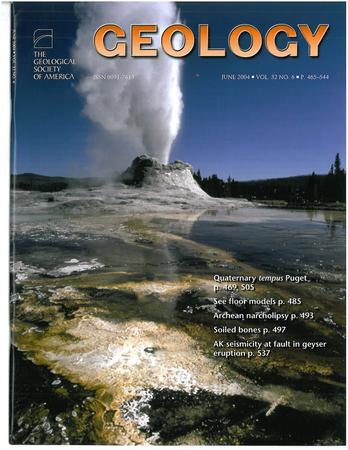Nowhere to hide: Volcanic ash invasion of limestone caves in New Zealand
IF 4.6
1区 地球科学
Q1 GEOLOGY
引用次数: 0
Abstract
Limestone caves are commonly located close to volcanic regions and can preserve signals of past eruptions, providing crucial chronostratigraphic constraints within and beyond U-Th dating limits for karst development and cave evolution. Here we document five caves in the Waitomo karst region of New Zealand that contain volcanic ash (tephra) from the Taupō Volcanic Zone, a highly active region of silicic volcanism. The cave-hosted deposits are glassy due to their protection from weathering, with one example being poorly sorted and locally indurated where pyroclastic flows filled the cave. Other deposits are bedded and inferred to have been water remobilized into the caves from surficial ash deposits. Glass compositions indicate that tephras located in cave floors and roof cavities and on cave walls were sourced from four caldera-forming eruptions, the 1.55 Ma Ngaroma, 1 Ma Kidnappers, 349 ka Whakamaru, and ca. 50 ka Rotoiti events, plus a smaller-volume event from Taupō volcano at ca. 40 ka, highlighting the repeated impact of explosive eruptions on this region. Tephra studies in caves thus provide crucial information that can be used to constrain cave sediment and volcanic histories, vertebrate fossil chronologies, and cave system and landscape evolution.无处藏身:火山灰侵入新西兰的石灰岩洞穴
石灰岩洞穴通常位于火山区域附近,可以保存过去火山喷发的信号,为岩溶发育和洞穴演化提供了重要的年代地层限制。在这里,我们记录了新西兰怀托莫喀斯特地区的五个洞穴,这些洞穴含有来自陶普火山带的火山灰(tephra),陶普火山带是一个高度活跃的硅火山活动区域。岩洞型矿床由于不受风化作用而呈玻璃状,其中一个例子是分选不良,在火山碎屑流充满洞穴的地方局部硬化。其他沉积物是层状的,据推测是水从地表火山灰沉积物中重新注入洞穴。玻璃成分表明,洞底、洞顶洞洞和洞壁上的有机质来自四次火山口形成的喷发,分别是1.55 Ma Ngaroma、1 Ma Kidnappers、349 ka Whakamaru和约50 ka Rotoiti事件,以及约40 ka tauphi火山的一次较小体积的喷发,突出了爆炸喷发对该地区的反复影响。因此,洞穴中的洞穴研究提供了重要的信息,可以用来限制洞穴沉积物和火山历史,脊椎动物化石年代学,洞穴系统和景观演化。
本文章由计算机程序翻译,如有差异,请以英文原文为准。
求助全文
约1分钟内获得全文
求助全文
来源期刊

Geology
地学-地质学
CiteScore
10.00
自引率
3.40%
发文量
228
审稿时长
6.2 months
期刊介绍:
Published since 1973, Geology features rapid publication of about 23 refereed short (four-page) papers each month. Articles cover all earth-science disciplines and include new investigations and provocative topics. Professional geologists and university-level students in the earth sciences use this widely read journal to keep up with scientific research trends. The online forum section facilitates author-reader dialog. Includes color and occasional large-format illustrations on oversized loose inserts.
 求助内容:
求助内容: 应助结果提醒方式:
应助结果提醒方式:


